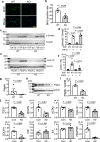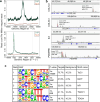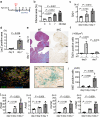Tcf21 modulates fibroblast activation and promotes cardiac fibrosis after injury via Pdgfrb signaling
- PMID: 40753125
- PMCID: PMC12317996
- DOI: 10.1038/s41598-025-13102-3
Tcf21 modulates fibroblast activation and promotes cardiac fibrosis after injury via Pdgfrb signaling
Abstract
Transformation of cardiac fibroblasts into matrix-producing myofibroblasts plays an important role in tissue repair and fibrosis after myocardial injury. Tcf21 is a basic helix-loop-helix transcription factor that is essential for the development of cardiac fibroblasts and the epicardium. Myofibroblasts are derived from Tcf21 (+) residual fibroblasts; however, whether Tcf21 itself promotes fibrosis is still unknown. Since Tcf21 deficiency leads to perinatal lethality, cardiac fibroblasts were isolated from Tcf21-knockout mouse embryos, and mice that lack Tcf21 after birth were generated (inducible Tcf21 KO, iTcf21). In vitro analysis revealed that Tcf21 promoted cell proliferation and upregulated the expression of extracellular matrix genes. Notably, the Pdgfrb-Erk pathway was severely suppressed in Tcf21-knockout fibroblasts. Chromatin immunoprecipitation-sequencing assay demonstrated the direct binding of Tcf21 to COL1A1, COL3A1, IL6, and PDGFRB loci. Integrated analysis identified pathways involved in fibroblast activation, extracellular matrix production and cell proliferation. Moreover, iTcf21 mice were resistant to cardiac fibrosis induced by isoproterenol injection or metabolic overload with streptozotocin-induced diabetes and a high-fat diet. Our results demonstrate a critical role for Tcf21 in the transformation of cardiac fibroblasts into activated myofibroblasts. It directly binds to gene loci and works in a pro-fibrotic manner via Pdgfrb signaling.
Keywords: Cardiac fibroblasts; Cardiac fibrosis; Erk; Matrix production; Pdgfrb; Tcf21.
© 2025. The Author(s).
Conflict of interest statement
Declarations. Competing interests: The authors declare no competing interests.
Figures





References
-
- Depre, C. & Taegtmeyer, H. Metabolic aspects of programmed cell survival and cell death in the heart. Cardiovasc. Res.45(3), 538–548 (2000). - PubMed
-
- Kawaguchi, M. et al. Inflammasome activation of cardiac fibroblasts is essential for myocardial ischemia/reperfusion injury. Circulation123(6), 594–604 (2011). - PubMed
MeSH terms
Substances
Grants and funding
LinkOut - more resources
Full Text Sources
Research Materials
Miscellaneous

